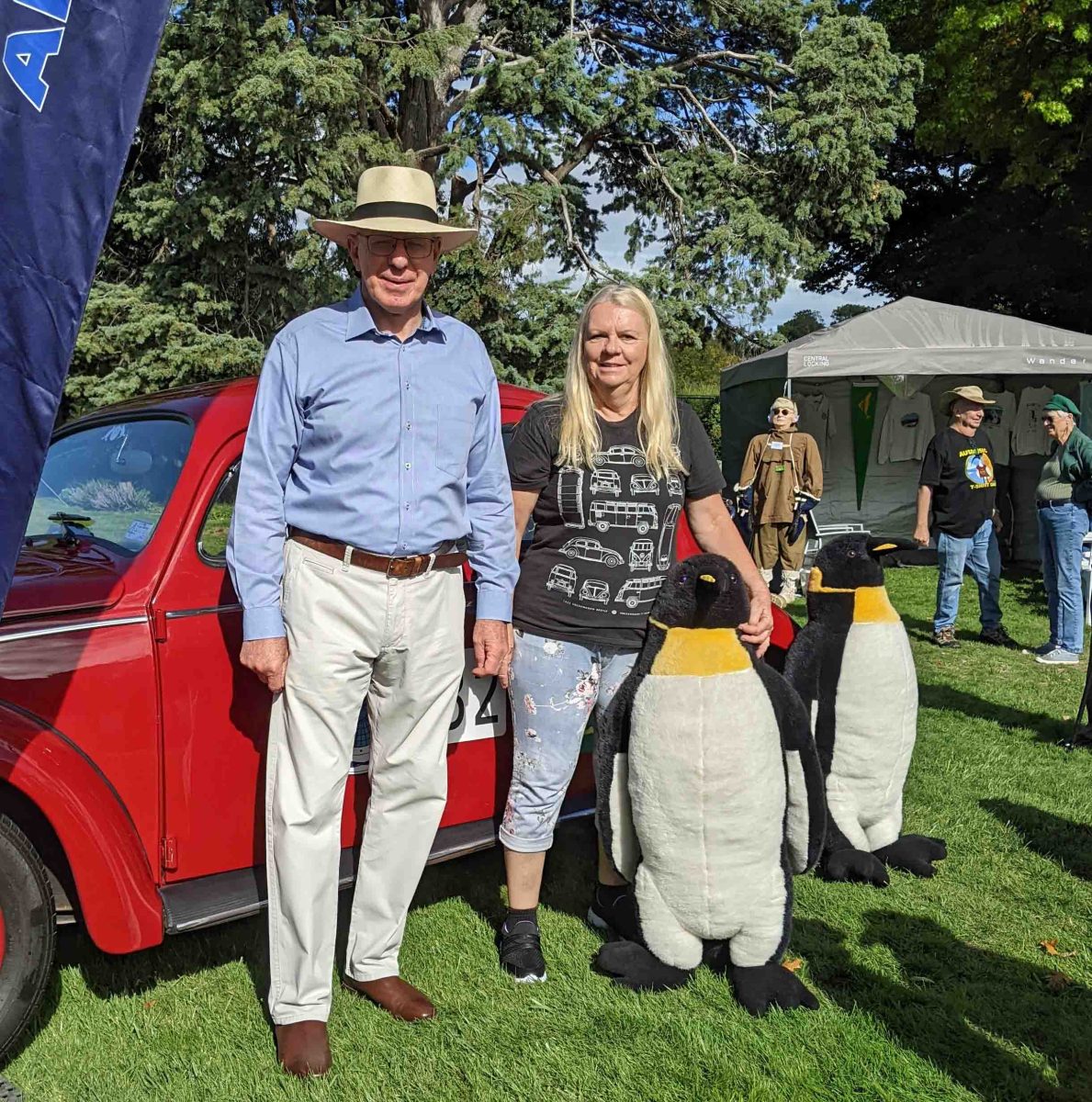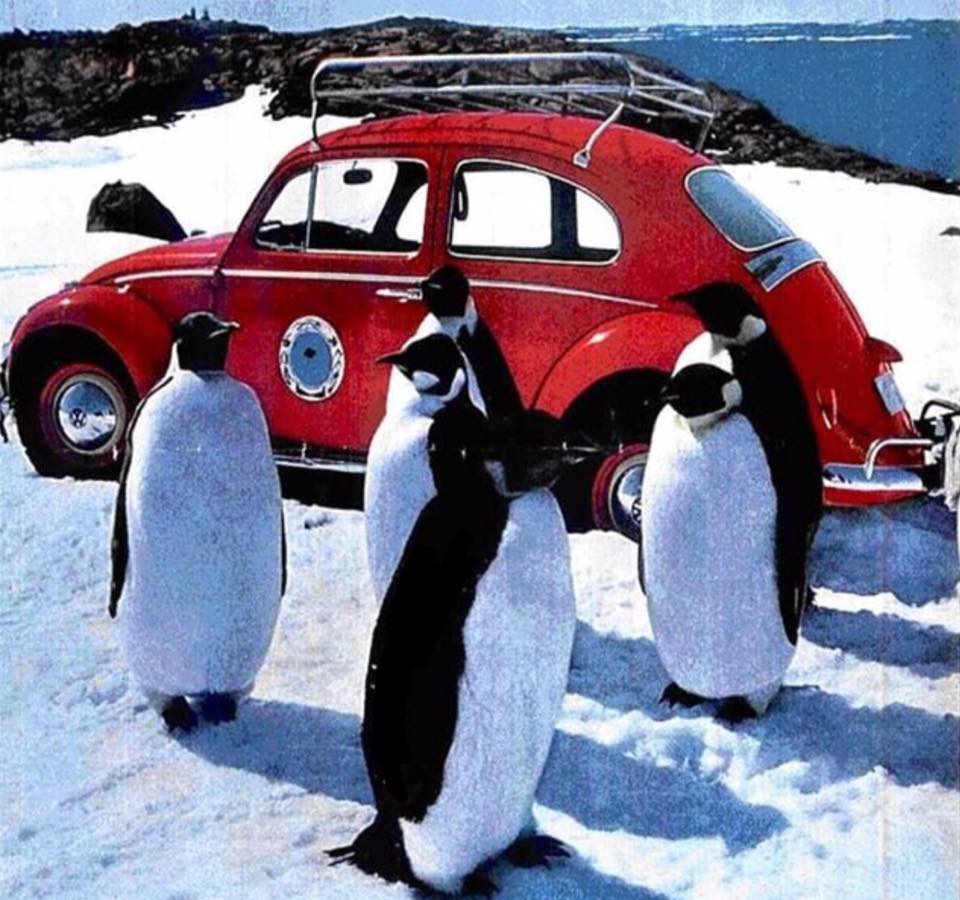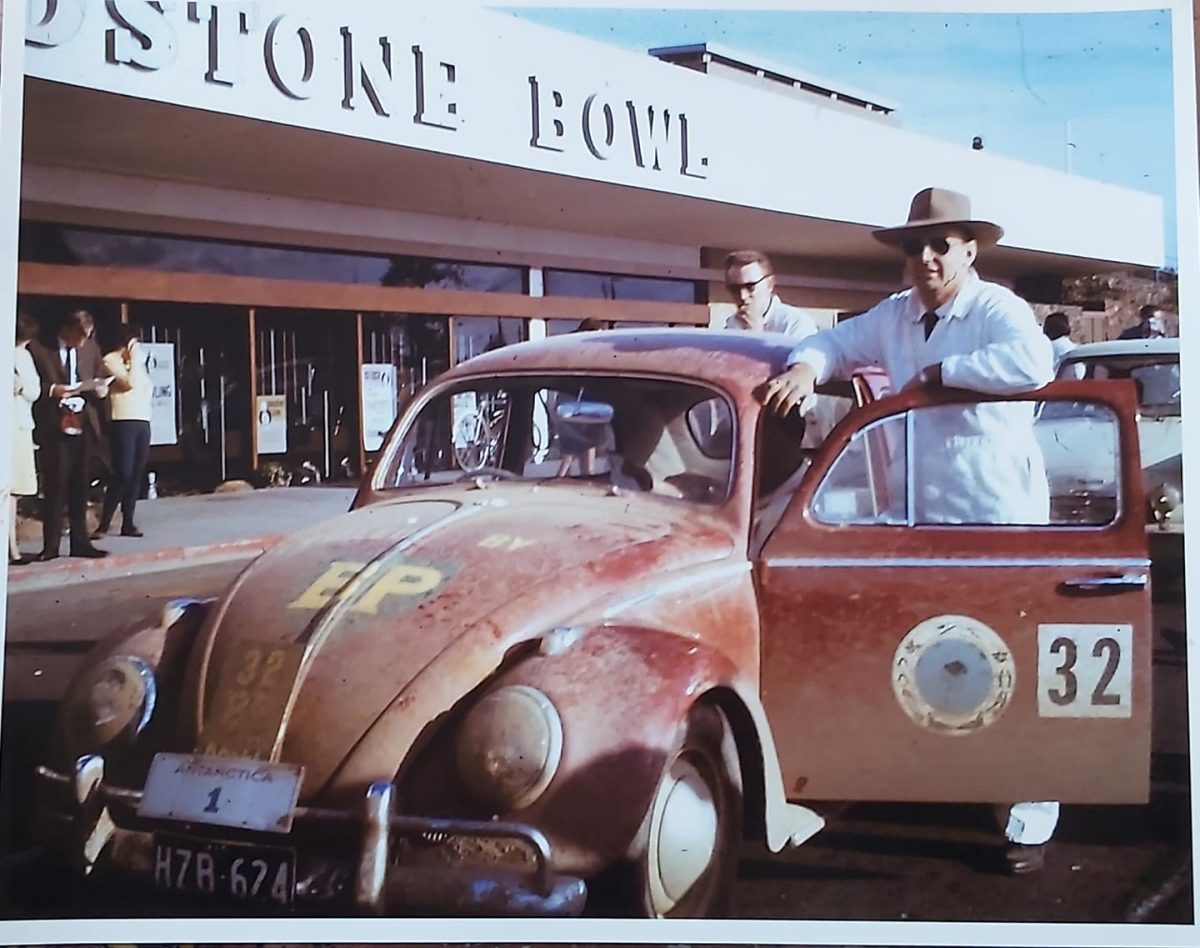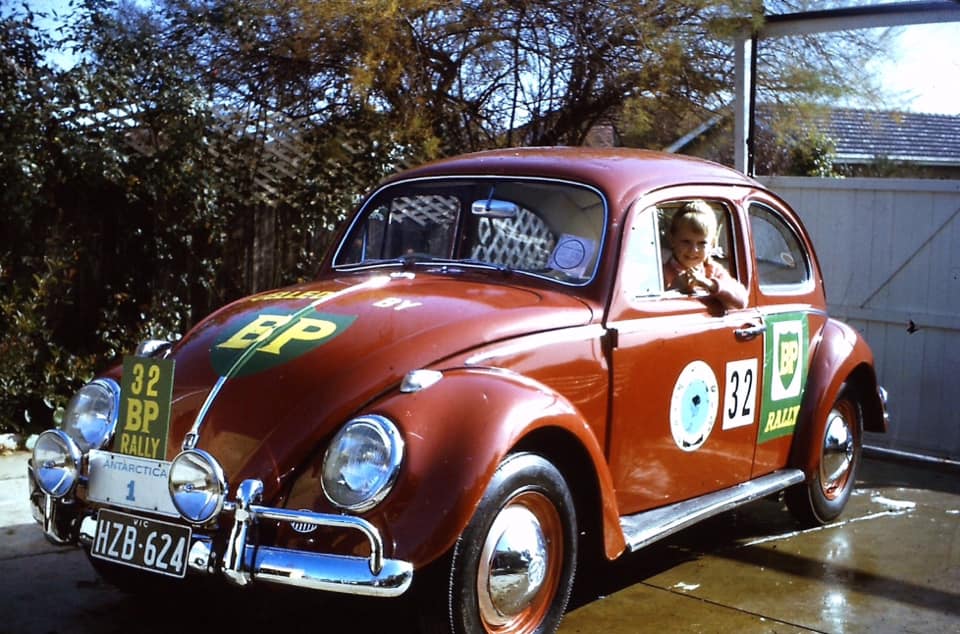
Governor-General David Hurley with the VW’s owner Sue Maher (and some penguins) at the Government House Open Day. Photo: Malcolm Robertson.
If daytime temperatures top out around minus-40 degrees Celsius in winter, you’ll need something air-cooled to get around.
The black Rolls Royce and other stately cars might be more commonplace visitors, but on Saturday (16 March), just such a car chugged through the gates at Government House.
The red Volkswagen Beetle, with its show registration plate of ‘Antarctica 1’ and ‘BP Rally’ decal, is a replica of a car that served for several years on The Ice as a support vehicle for Australia’s Antarctic expeditioners – and then as a rally winner – before it mysteriously disappeared.
Surrounded with fluffy penguin toys, the ‘Red Terror’ – as it came to be called – was the star exhibit at the Government House Open Day.
Governor General David Hurley and his wife Linda Hurley are patrons of around 150 organisations, including the Australian National Antarctic Research Expeditions (ANARE) Club, which has state and territory branches across Australia.
“Basically, it’s a club for returned Antarctic people, and its main aim is to promote Antarctica as an interesting place for research and study and provide a community for people who have been to Antarctica,” ANARE ACT convenor Malcolm Robertson explains.
In January 2022, the club also arranged for Year 12 students Naomi Leszczynska from Gungahlin College and Toby Davis from Hawker College to secure seats on board a special Qantas sightseeing tour over Antarctica as winners of a 1000-word essay competition.

‘Antarctica 1’ was surrounded by emperor penguins in 1963. Photo: BP Rally, Antarctica 1, Facebook.
Malcolm previously worked as a geophysicist on the westernmost of Australia’s research bases, Mawson (almost directly under Perth).
“My role was to run a set of equipment that recorded earthquake arrival times, seismic activity, magnetic forces, and other such data,” he says.
“For the science and the meteorology programs to go ahead, you’ve got a whole group of people that look after those people – doctors and chefs and diesel mechanics and electricians and carpenters.”
These people need transport, and in the 1960s, when VW was building cars in Clayton, Victoria, and boasting of the humble Beetle’s prowess in all climatic extremes, Australia’s Antarctic division decided to see if they’d put their money where their mouth was.
“It can be like a good Canberra morning during the summer [in Antarctica] when you get a crisp three to five degrees, but it drops down to minus-40 in the middle of winter,” Malcolm says.
Sure enough, over 10 years, three Beetles were sent south, fitted with snow chains, and “performed really well”.

Ray Christie on arrival back in Melbourne after the 1966 BP Rally. Photo: BP Rally, Antarctica 1, Facebook.
On its return to Melbourne, VW enlisted factory worker turned sponsored driver Ray Christie to enter the first car in the BP Rally of 1966. Despite low expectations, it beat all 42 other cars around the south-east of Australia and won the 3200 km, four-day event.
It ended up outside a BP service station in Seymour, Victoria, where it’s presumed to have either been accidentally buried or scrapped during demolition. Antarctica 2 and 3 faced similar fates.
But the Red Terror’s story left its mark on Ray’s daughter, Sue Maher.

Sue Maher in the seat of Antarctica 1. Photo: BP Rally, Antarctica 1, Facebook.
“I actually sat in it in our backyard when it was given to my father to get ready for the BP rally, so it’s quite special to me,” Sue says.
This prompted her to buy a red VW Beetle, and “one thing led to another” to the point today’s replica is fitted out exactly like its forebear – down to the original numberplates – as a tribute to her father.
Sue brought it down from Brisbane on a trailer for Saturday’s Open Day and says the reaction was “amazing” (even if a large part of that had to do with the stuffed penguins).
“The amount of people that came over and sat in it and talked about the story – they were just totally fascinated.”
The VW factory in Melbourne produced more than 260,000 Beetles between 1959 and 1968, at which point it converted to assemble cars imported from Japan. Nissan later took it over to produce Datsuns.












